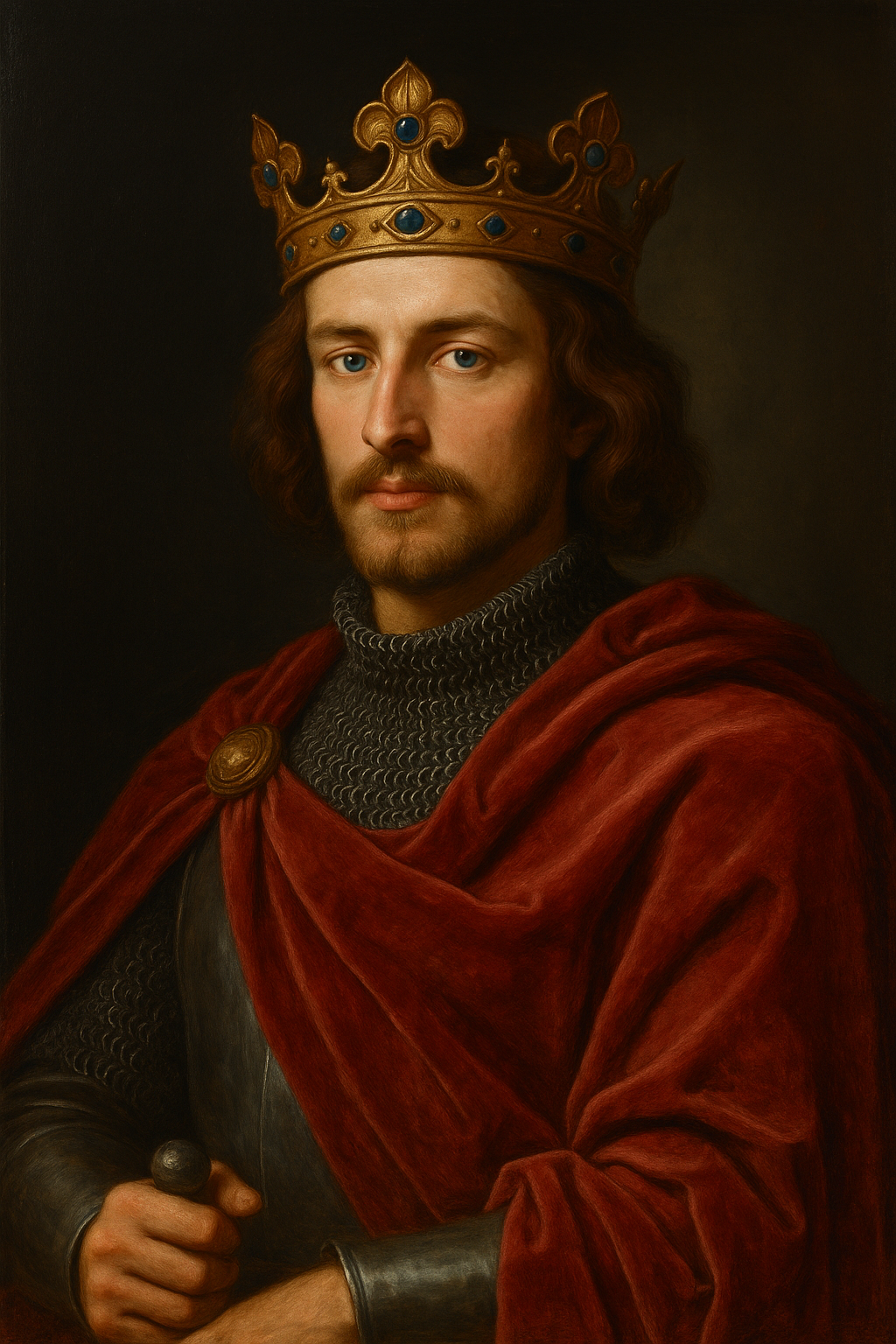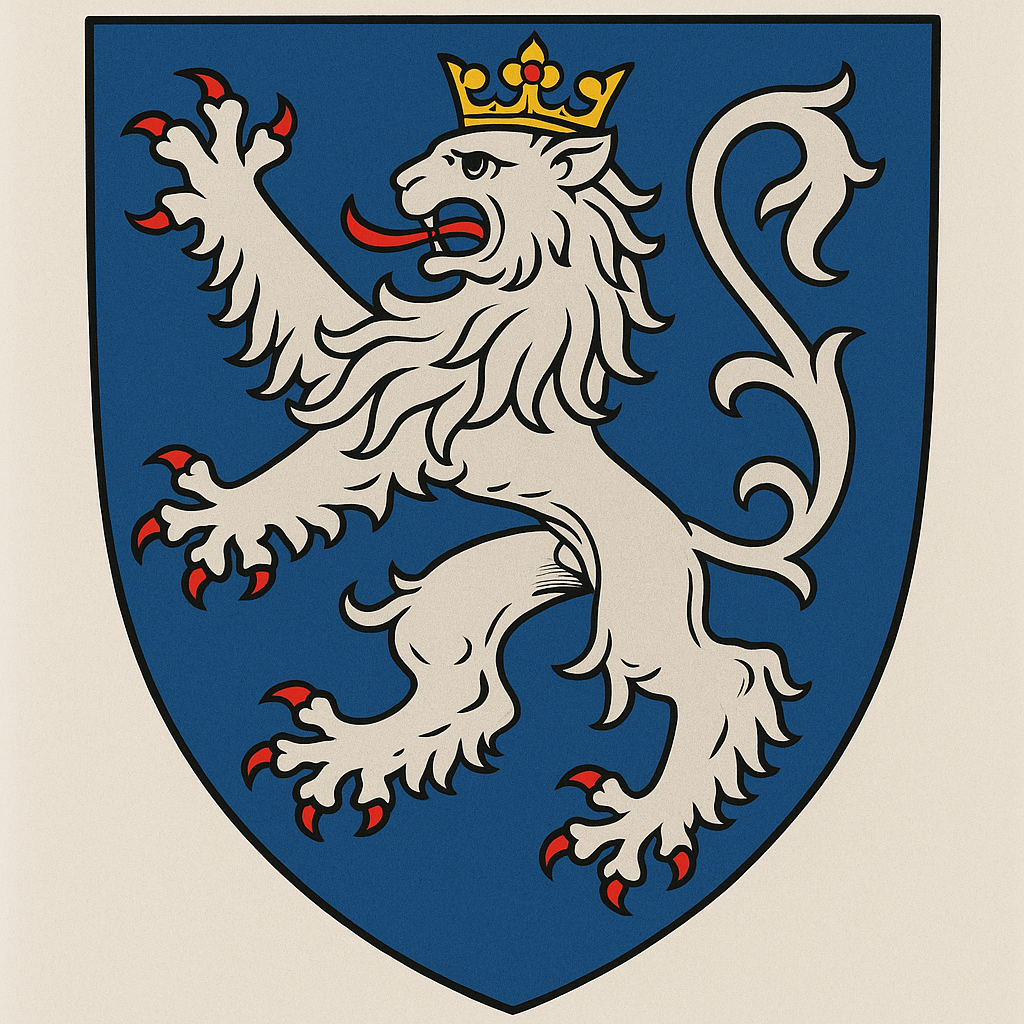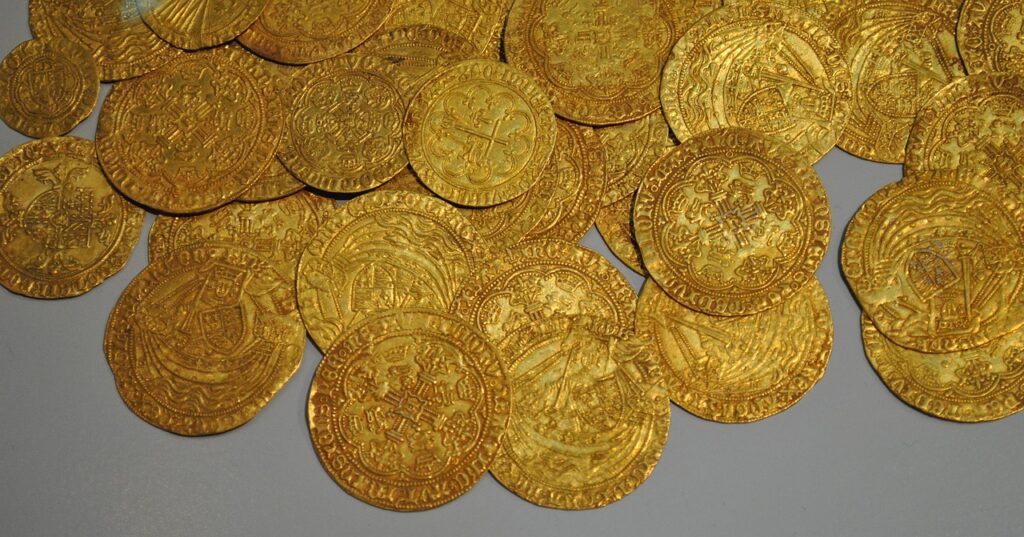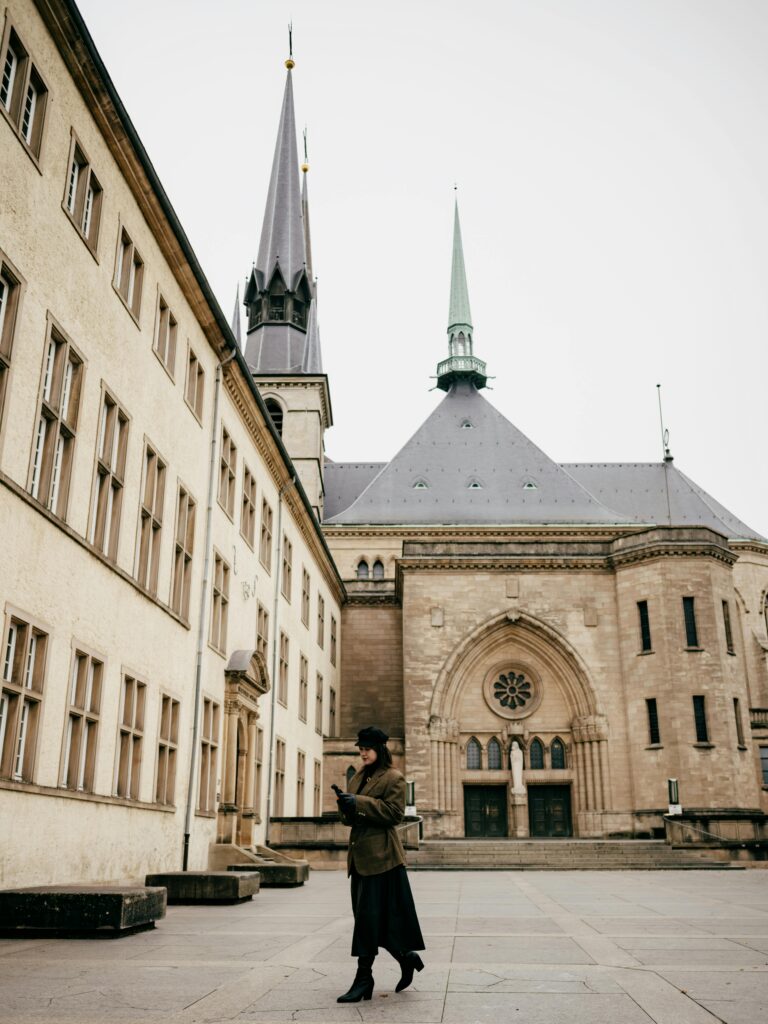
John of Luxembourg, Czech king and European legend!
John of Luxembourg – blind king, brave knight and father of Charles IV. Discover the story of one of the most iconic rulers in Czech history.
John of Luxembourg: Knight King, diplomat and father of Emperor Charles IV.

Ladies, let's take a look at a man who is a bit underappreciated in our history, but all the more fascinating. He is... John of Luxembourg, King of Bohemia. This monarch, although a foreigner by origin, left an indelible mark on our country and on Europe. He was a knight-king, a capable diplomat and, above all, the father of the famous emperor Charles IV. Without John, Charles IV would never have ruled the Holy Roman Empire.
The royal son of France
John was born as the only son of Henry VII, Count of Luxembourg, and Margaret of Brabant. As a young boy, he was sent to France for upbringing, where he learned chivalric ideals and courtly etiquette. And what a handsome man he was, John! Chronicles praise him as a young man “beautiful, handsome in appearance, handsome in beauty above the sons of almost all men” with blue eyes and fair hair.
A marriage of convenience and a little bit of politics
When the Czech nobles were looking for a new king, they fell in love with John. He was young, from a good family, and had to promise to respect their rights. So John married Eliška Přemyslovna, the sister of the murdered King Wenceslas III. Eliška was a few years older, but she was said to be a beautiful and pious woman who had a good influence on John… at least at first. John’s marriage to Eliška was not always idyllic. Eliška had strong ideas about government and refused to compromise with the nobility. Their mutual disputes eventually led to John separating from Eliška.
Descendants:
1st marriage ∞ 1310 Eliška Přemyslidovna (1292–1330):
- Margaret of Luxembourg (1313–1341)
- Judith/Bona of Luxembourg (1315–1349)
- Wenceslas/Charles IV (1316–1378)
- Premysl Ottokar (1318–1320)
- John Henry (1322–1375)
- Anne of Luxembourg (1323–1338)
- Elizabeth of Luxembourg (1323 – before 1330)
2nd marriage ∞ 1334 Beatrix of Bourbon (1318–1383)
- Wenceslas of Bohemia (1337–1383)
- Bona
3.Illegitimate children:
Nicholas of Luxembourg (1322–1358)
And from his marriage with Eliška Přemyslovna, a son was born, Wenceslas, later Charles IV. John summoned Charles to Italy to help him with the administration of his possessions there. Their relationship was complicated, but John eventually established his son as his successor and King of the Romans.
The king on the move and the nobility in power
The Czech nobles were not satisfied with the rule of Henry of Carinthia and were looking for a new ruler. The choice fell on John of Luxembourg. The reason? He was a young man from a prominent family and, moreover, he was to marry Elizabeth of Přemyslid. The wedding took place on September 1, 1310 in Speyer. John was only 14 years old, Elizabeth 18. After the wedding, John still had to occupy Bohemia militarily, because Henry of Carinthia did not want to give up the throne. At the end of the year, John accepted a pledge of loyalty from the Czech estates and confirmed their privileges.
But Jan was not the type of king who would sit at home on his ass.
He loved knightly tournaments, political intrigues and traveling around Europe. The Czech nobility liked such freedom, so they ruled happily and only sent money to Jan for his expenses. But as is often the case, the money quickly ran out and Jan had no choice but to occasionally come to Bohemia and shake the nobility to let go of some crowns.
King, diplomat and warrior
It must be said, however, that John was not only a knight and an adventurer. Despite all the criticisms that he was a “foreign king”, we must admit that he was also a very capable diplomat. He acquired new territories for the Czech kingdom, settled disputes between monarchs and prepared the ground for his son Charles IV to become emperor. He also supported the development of trade and crafts and had the first gold coins minted in Prague.

Heroic death in battle
John of Luxembourg died in the Battle of Kresčak in 1346, where he fought as a blind old man alongside the French king. King John of Luxembourg left this world with words that will forever be written in the history of chivalry and the Czech nation:
"God forbid that the Bohemian king should run away from battle."
To some, it might sound like bragging. But to Jan, it was an honor.
He fought under the banner of Přemysl Otakar II and during his lifetime spread the reputation of Czech warriors so powerfully that it was said throughout Europe:
"Without God and the King of Bohemia, nothing can be achieved in battle."
Although he was already blind, he refused to give up the fight and allowed himself to be led into battle. His bravery and determination became legendary.
John of Luxembourg – a king we can be proud of
So ladies, even though John of Luxembourg was no saint and sometimes treated Bohemia like an ATM, he was definitely an interesting and capable ruler. And we should not forget him. After all, without him, Charles IV would not have been who he was. John of Luxembourg was undoubtedly a complex personality. He had his dark sides, but he was also a brave knight, a capable politician and the father of one of the greatest Czech monarchs. His life and deeds are an important part of our history and deserve to be remembered.
His courage and chivalrous spirit left a mark not only in our history, but also in the emblem of the British monarchy.
After the Battle of Kreschak, King Edward III of England ordered the still-breathing John of Luxembourg to be brought to his tent. When the king died, Edward removed the crown from his helmet. three ostrich feathers and password "I am doing" – "I serve".
He gave them to his son, known as Black PrinceAnd it was these pens that became a symbol Princes of Wales – and they are still part of the coat of arms of the British royal family today.
If you want to learn more about John of Luxembourg, be sure to check out brief summary and facts on Wikipedia, and if you like historical novels, I highly recommend the book. In the sign of Leo by Jan Šmíd – one of the best books ever written about him. A real treat!
John of Luxembourg – a brave knight who died a hero

John of Luxembourg, the first Bohemian king of the Luxembourg dynasty, is one of the most impressive figures in our history. This tall, athletic man, over 170 cm tall, with curly blond hair and piercing blue eyes, was the embodiment of the chivalric ideals of his time. Although he lost his sight between the ages of 41 and 43 (1337–1339), examination of his remains using modern methods revealed the body of a healthy, athletic man of fifty.
It is fascinating that he died on the same day as another great Czech king – Přemysl Otakar II – almost seventy years earlier.
His heroic death at the Battle of Kresčak in 1346 became legendary. Although he was already completely blind, he allowed himself to be tied to his knights and fought in the front line alongside the French king. Anthropological research of his remains in 1980 confirmed the dramatic chronicler's account of his last battle - revealing a fatal stab wound that penetrated the left eye into the interior of his skull, and a second fatal wound to the back that hit the left half of his chest.
As the contemporary poet Guillaume de Machaut says: "In the memory of the King of Bohemia, keep... Before he departed this life, he made his son a marquis, duke, count and king, both by arms and by law. In this way he secured for him the entire empire."
The fate of his remains, which underwent an incredible pilgrimage across Europe, is also remarkable.
From its original burial in a monastery in Luxembourg, through several moves during the wars, to its current resting place in Notre-Dame Cathedral in Luxembourg, during this long journey his body even ended up in the cabinet of curiosities of a noble collection and was later hidden behind a pile of wood in a baker's house during the French Revolution.
Peace on the 600th anniversary of his death
After World War II, Luxembourg exercised its right and in 1946, exactly on the 600th anniversary of his death, his remains were ceremoniously transferred back to his native land. Today, this courageous king, who so significantly expanded the territory of the Czech Kingdom, rests in the Notre-Dame Cathedral near the tomb of the Grand Dukes of Luxembourg.
If you like interesting stories and books, follow the section Books & Legends 😊





[…] All the royal families in the world have Rh negative blood. Coincidence? Maybe. Or carefully controlled genetics? […]
[…] brave men from our collection: John of Luxembourg and Mick […]